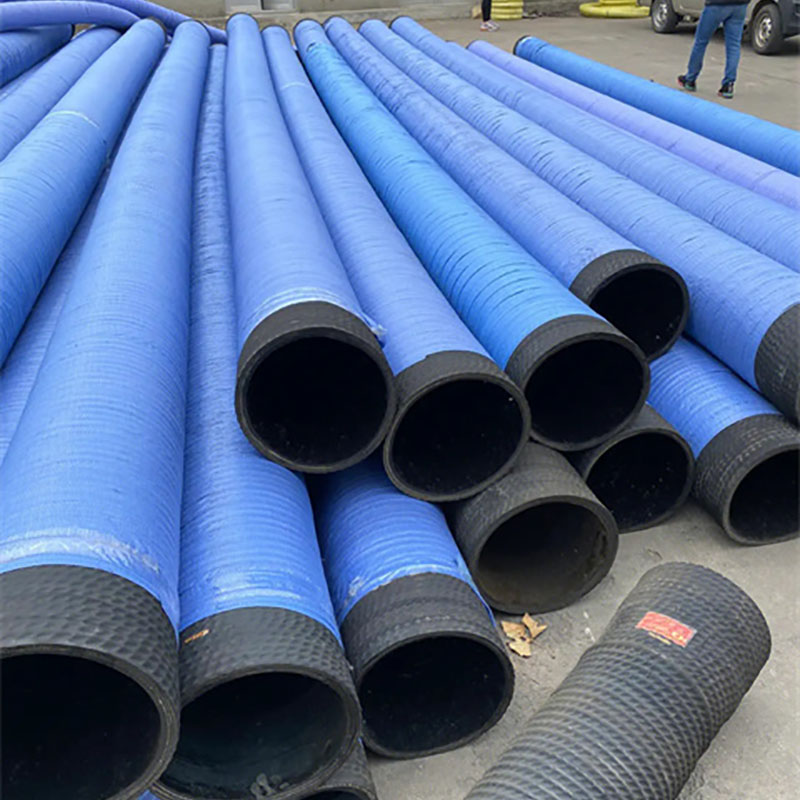

1.Correct use of rubber hose
It is very important to determine the length of rubber hose you need. You should also check whether the usage conditions of the rubber hose meet the requirements of the selected hose. You should make sure that the rubber hose you will be using is the most suitable. Working pressure and suction values should be determined carefully. In particular, it should be noted that sudden pressure changes or pressure peaks exceeding the allowed maximum value will greatly shorten the life of the rubber hose. Both ends of the rubber hose must not be continuously immersed in the conveyed material.
2. Install the rubber tube for use
If you install a rubber hose with a bend radius smaller than the specified minimum, the service life of the rubber hose will be greatly shortened. Therefore, before installation, it is recommended that you seek consultation for usage information, especially information on the bending radius of the rubber tube.
3. Maintenance of rubber tubes
Cleaning: After use, it is recommended that you empty the hose. Cleaning should be carried out if necessary. Inspection: Rubber hoses must be inspected after each use to ensure there is no structural damage. Pressure: If the rubber hose is subjected to severe pressure during use or the outer layer of the rubber hose will be in contact with the transported liquid for an extended period of time, a hydraulic test is recommended.
Rubber hose storage recommendations
Due to the natural nature of rubber, the physical properties and performance levels of all rubber products vary. Such changes usually occur over time depending on the type of rubber used. But changes can also be accelerated by several factors or a combination of factors. Other materials used to reinforce rubber tubing may also be negatively affected by improper storage conditions. The following recommendations include a series of precautions to minimize the risk of deterioration of items in storage.
1. Storage time
A rotation planning system should be used to minimize the storage time of rubber hoses. If prolonged storage cannot be avoided and the following recommendations cannot be observed, the rubber hose should be thoroughly inspected before use.
2. Physical storage conditions
Rubber tubes must be stored to avoid mechanical stress, including excessive stretching, compression or deformation, and to avoid contact with sharp or sharp objects. Rubber hoses should preferably be stored on suitable racks or on dry ground. Rubber tubes packaged in coils must be stored horizontally and rubber tubes should not be stacked. If stacking cannot be avoided, the stacking height should not cause permanent deformation of the underlying rubber tubes. As a rule, try to avoid wrapping rubber tubes around posts or hooks. If the rubber hose is shipped as a straight tube, it is recommended to store it horizontally without bending it.
3. Contact with other materials
Rubber hoses must not come into contact with solvents, fuels, oils, greases, unstable chemicals, acids, disinfectants, or general organic liquids. Furthermore, rubber of any kind can be damaged when it comes into contact with certain materials or mixtures, including manganese, iron, copper and their alloys. Rubber hoses should avoid contact with polyvinyl chloride (PVC) or wood or cloth impregnated with impurity oil.
4. Temperature and humidity
Recommended storage temperature: 10 degrees Celsius to 25 degrees Celsius. Note: Rubber tubes must not be stored at temperatures above 40 degrees Celsius or below 0 degrees Celsius. Special caution should be taken when moving rubber hoses below -15 degrees Celsius. Rubber tubes must not be stored near heat sources, and the relative humidity should not exceed 65%.
5. Exposure to heat sources
The temperature restrictions stated in point 4 must be observed. If this is not possible, insulation should be used to protect the rubber hose from heat sources.
6. Exposure to light
The storage room used to store rubber hoses should be kept dark and should especially be protected from direct sunlight or strong artificial light. If the storage room has windows or any openings covered by glass, they should be screened.
7. Exposure to oxygen and ozone
Rubber tubing should be packaged appropriately or stored in a closed container to avoid exposure to air. Equipment that easily releases ozone must not be placed in the storage room. Ozone has a particularly strong impact on all rubber products.
8. Exposure to electric or magnetic fields
Storage rooms should avoid any situation that may generate electric or magnetic fields, including exposure to high-voltage cables or high-frequency generators.
